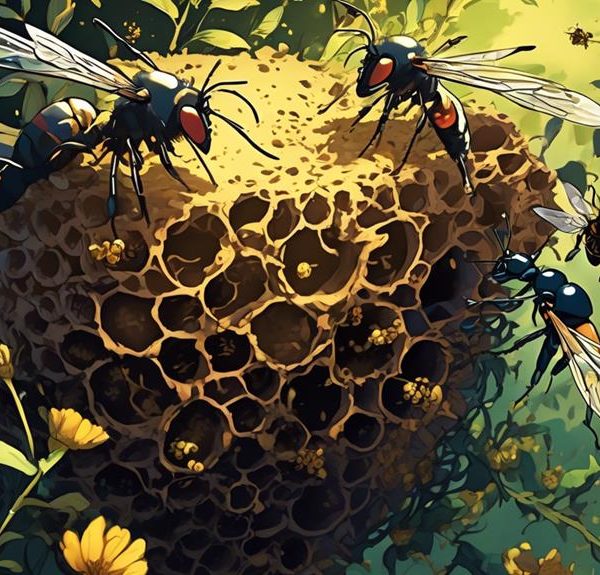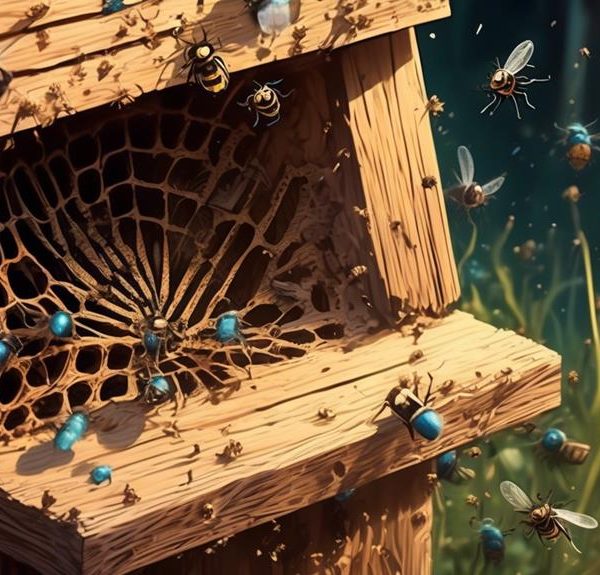Sting or not, discover the intriguing truth about Red Mason bees and quell your fears once and for all.
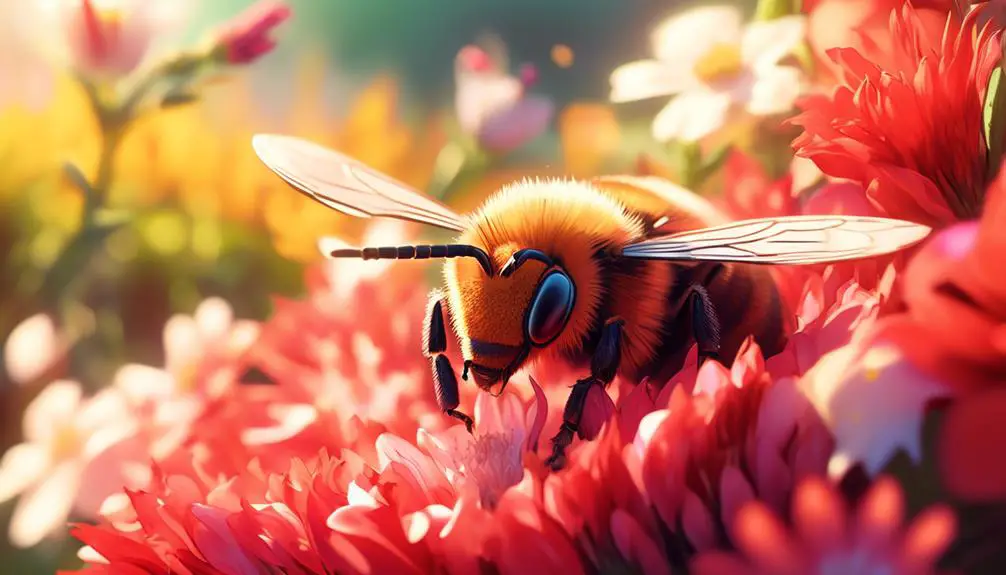
Do Red Mason Bees Sting?
If you've ever been stung by a bee, you might think you're in for a world of pain every time you spot a Red Mason bee.
But, have you ever stopped to question if this fear is grounded in fact?
You're about to uncover the reality behind these misunderstood creatures.
Will it turn out that the Red Mason bee is as sinister as you've been led to believe, or could there be more to this story?
Let's find out.
Key Takeaways
- Red Mason Bees are solitary creatures and do not live in colonies or have a queen.
- They construct their own nests in small cavities like hollow stems or man-made bee hotels.
- Red Mason Bees are generally non-aggressive and will only sting if threatened or handled roughly.
- Their sting is less painful and less potent than that of a honey bee.
Understanding Red Mason Bees
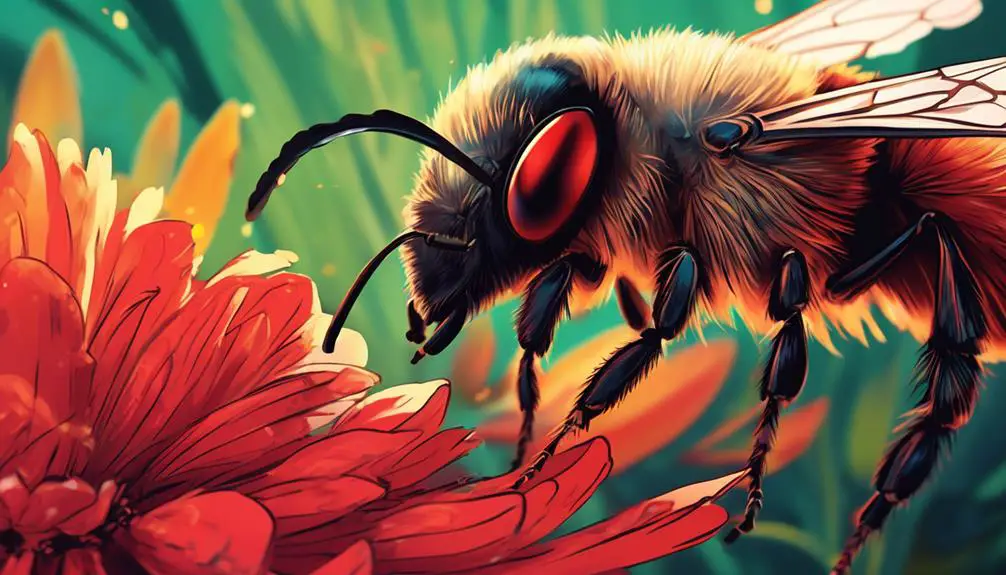
To fully understand Red Mason Bees, you'll need to dive into the intricacies of their behavior, lifecycle, and their unique traits, such as their solitary nature and nesting habits. Unlike honey bees, Red Mason Bees are solitary creatures. They don't live in colonies or have a queen. Instead, each female is fertile and constructs her own nest. These nests are often found in small cavities like hollow stems or even man-made bee hotels.
The lifecycle of a Red Mason Bee is fascinating. After mating, the female starts collecting pollen and nectar, which she places in a cell within the nest. She then lays an egg on this provision and seals the cell. This process repeats until the nest is full. The larvae that hatch consume the stored food, then pupate and overwinter as adults within the nest.
One of the most striking traits of these bees is their metallic green-blue or red color, which can vary based on geographical location. Despite their colorful and somewhat intimidating appearance, they're generally non-aggressive. They'll only sting if threatened or handled roughly, and their sting is less painful than that of a honey bee.
Red Mason Bees' Lifespan and Habitat
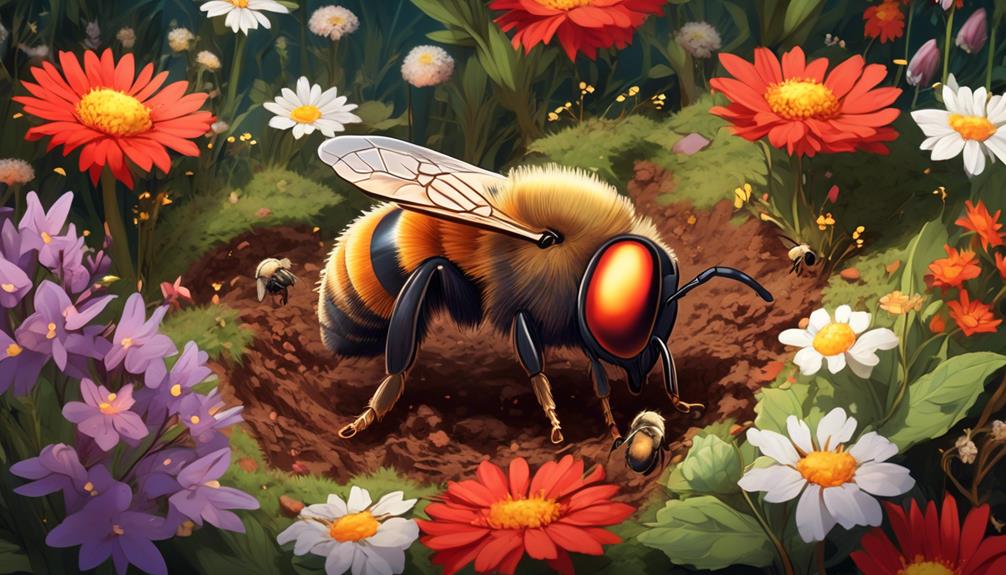
Building on our understanding of their behavior and unique traits, let's now explore the life expectancy and natural habitats of Red Mason Bees.
In terms of lifespan, these fascinating little creatures don't live very long. The females typically survive for about 6-8 weeks, while the males generally have even shorter lives, ranging from 2-3 weeks.
You'll find these bees in a variety of habitats. They're highly adaptable and can thrive in both urban and rural settings. The key is the availability of cavities for nesting, which they find in dead wood or hollow stems. They've also been known to take up residence in man-made structures, like small holes in brickwork, hence their name 'Mason'.
In terms of geographical distribution, Red Mason Bees are native to Europe and Northern Asia but have been introduced to North America as well. They're cold-tolerant and can survive in a wide range of climates, from temperate to subarctic.
Understanding their lifespan and habitat is essential for their conservation. So, if you're looking to help these pollinators, consider creating bee-friendly environments in your local area.
The Importance of Red Mason Bees

Despite their small size and short lifespan, Red Mason Bees play a crucial role in our ecosystem, particularly as efficient pollinators. You mightn't realize it, but these tiny creatures are more effective at pollinating than honeybees. While honeybees may collect more pollen, Red Mason Bees have a knack for spreading it around more evenly. This ensures a higher rate of fertilization, leading to more fruit and seeds.
The role of Red Mason Bees doesn't stop there. They also contribute to biodiversity. They're solitary bees, nesting in small holes and cracks, often in old wood or plant stems. This habit helps to recycle dead plant material and encourages other organisms to take up residence.
Unfortunately, these bees are facing threats from habitat loss and climate change. They're sensitive to environmental changes, making them excellent indicators of ecosystem health. If you notice a decline in Red Mason Bees, it's likely that other species are also struggling.
Debunking Red Mason Bee Myths
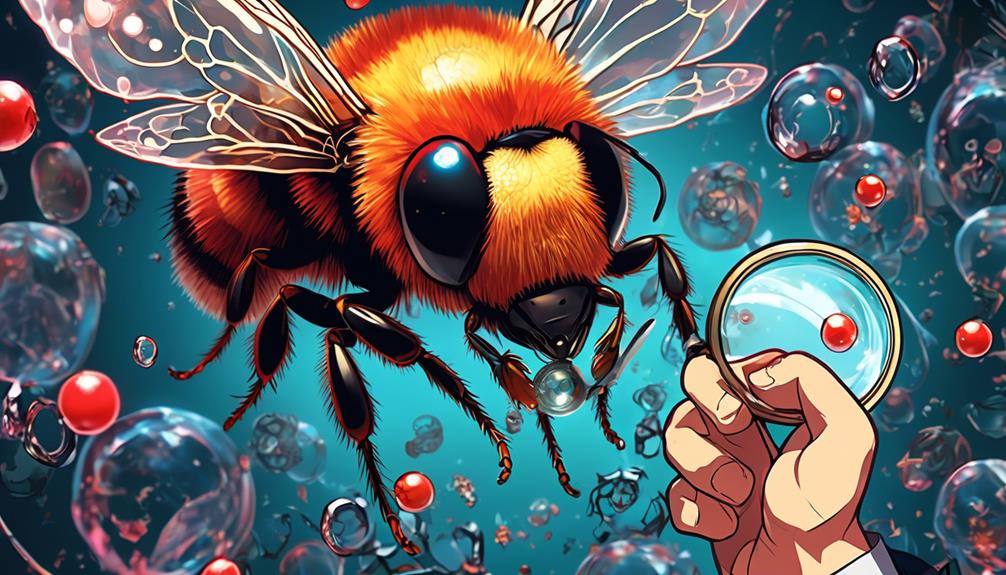
In the world of entomology, countless myths surround Red Mason Bees, many of which inaccurately portray these beneficial insects as harmful or nuisance creatures. You might've heard that they're aggressive or that their sting is dangerous. However, these claims aren't rooted in scientific truth.
Contrary to common belief, Red Mason Bees aren't aggressive. They're solitary creatures, meaning they don't have a hive or queen to protect. This lack of territorial behavior drastically reduces any potential for aggression. While female Mason Bees do possess a stinger, they're not inclined to use it unless threatened or mishandled.
Another myth suggests that these bees are destructive pests. In reality, they're quite the opposite. Mason Bees are known for their exceptional pollination abilities. They're docile, beneficial pollinators that significantly contribute to our ecosystem. They don't damage wooden structures like some bee species but instead prefer existing holes and cavities for nesting.
Understanding these truths about Red Mason Bees helps to debunk the myths, promoting a more accurate and informed perspective. These bees aren't harmful nuisances but essential contributors to our environment.
The Truth About Red Mason Bee Stings
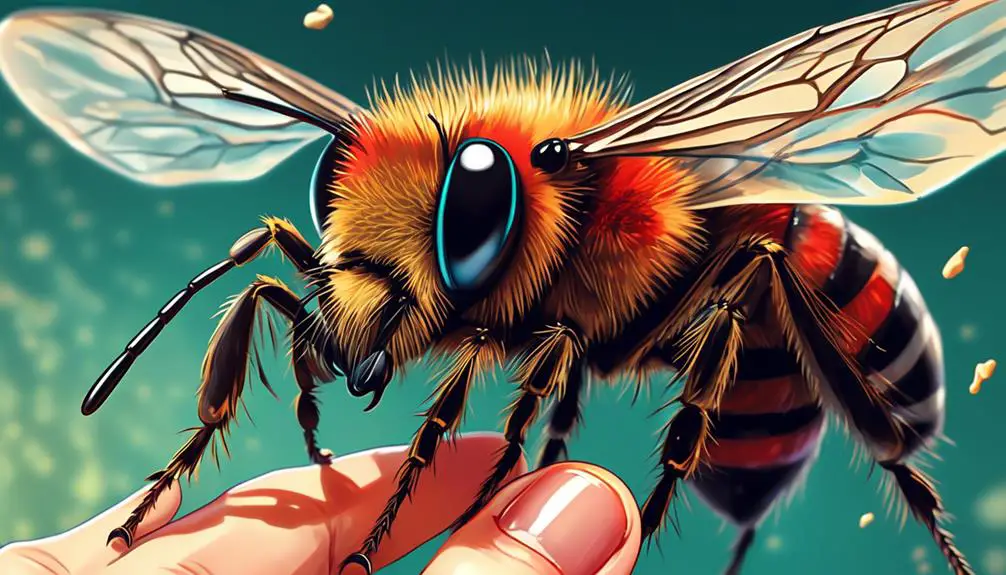
So, do Red Mason Bees sting?
Yes, but it's not as alarming as you might think. Unlike their honeybee cousins, Red Mason Bees aren't generally aggressive. They'll only sting if they feel threatened or if their nest is under attack. The sting itself is less potent than that of a honeybee, and most people describe it as a minor irritation rather than a painful experience.
The venom of a Red Mason Bee is also less toxic than that of other bees. In fact, the amount of venom they produce is so minute that it's unlikely to cause any serious harm. Most people will only experience mild discomfort and slight swelling that subsides in a few hours.
However, if you're allergic to bee stings, it's a different story. Even a mild sting can cause an allergic reaction, so it's best to avoid any direct contact with these bees if you're aware of your allergy.
Conclusion
In conclusion, you'll find Red Mason Bees aren't aggressive stingers. They're vital pollinators, not pests. While they can sting, they only do so if threatened. Their sting is less painful than a honeybee's and they're less likely to sting than many other bees.
Understanding these facts can help you appreciate the important role these creatures play in our ecosystems. So, next time you see a Red Mason Bee, remember, there's no need to panic!

